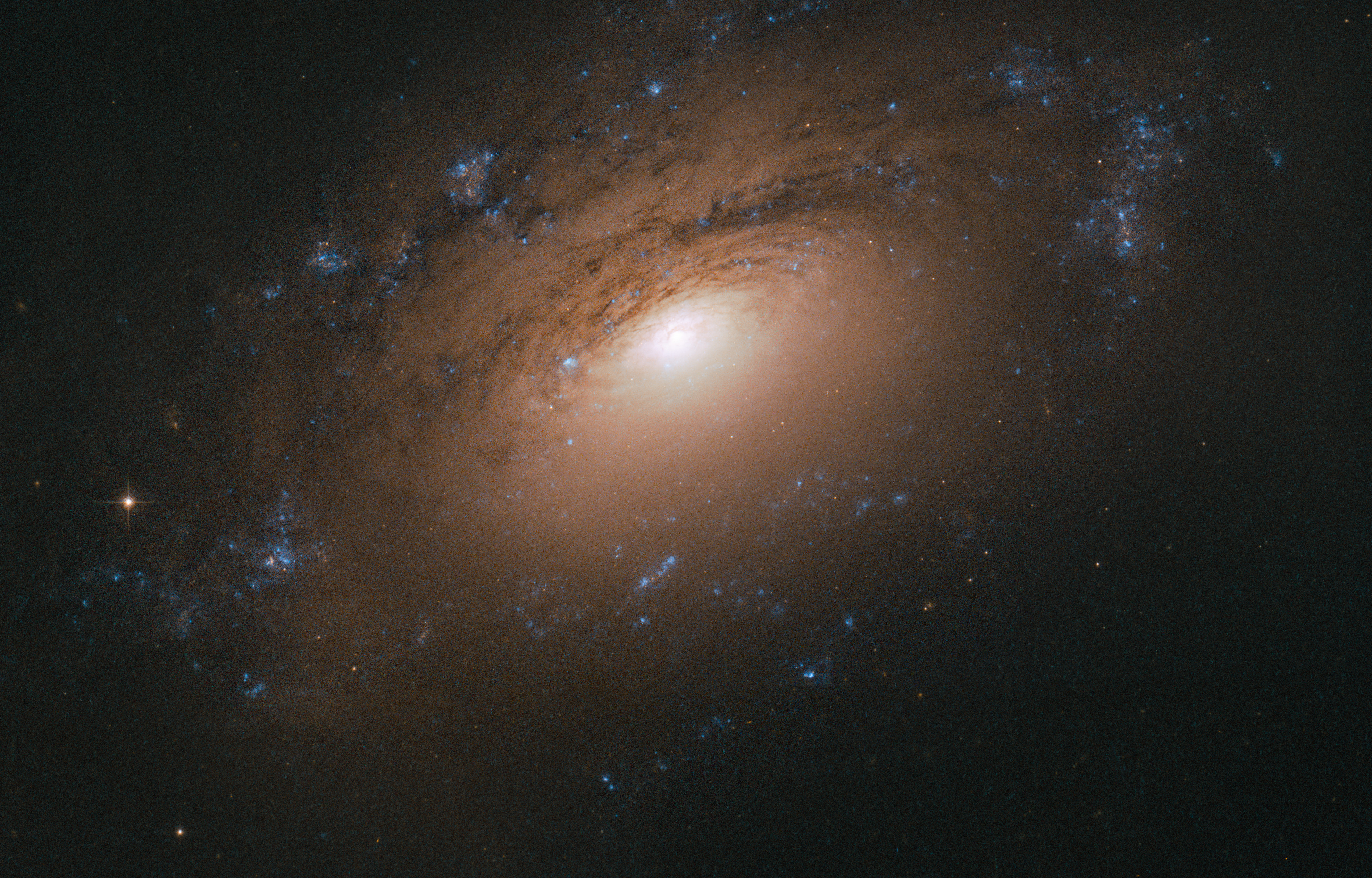Hubble Captures Spiral Galaxy with 'Barrier' of Dust (Photo)

A new galactic image from the Hubble Space Telescope shows some interesting stuff lurking in cosmic dust, all from an unusual point of view.
The venerable observatory turned its attention to NGC 3169, a spiral galaxy about 70 million light-years away in the constellation of Sextans, the Sextant. (One light-year is the distance light travels in a year, which is about 6 trillion miles or 10 trillion kilometers.)
The "sharply angled perspective" that the space telescope imaged shows a sort of cosmic barrier that makes the viewer feel as though they're peering over the edge to see the galaxy's center, Hubble scientists said in a description of the image.
Related: The Best Hubble Space Telescope Images of All Time!
What's in the dust barrier is a mix of world-formation materials, including water ice, silicates and hydrocarbons. On a planet or moon, if you mix these three things together at the right distance from a parent star, you might have the right ingredients for life: water, a solid surface from silicate rock, and hydrocarbon chemistry that could eventually trigger life chemistry.
Like NGC 3169, our Milky Way is a spiral galaxy. And there's another similarity to note: both galaxies formed in larger groups that belong to the Virgo Supercluster of galaxies. The galaxies in our neighborhood are known, appropriately enough, as The Local Group. NGC 3169's locality is called the Leo I Group.
Hubble is nearly 30 years old and still going strong in its scientific work, in large part thanks to several space shuttle astronaut crews who repaired or replaced components on the observatory over the decades. The observatory is flexible enough to view planets close by in our solar system, or some of the oldest galaxies that are very far away. Hubble is expected to keep working for at least a few years after its successor, the James Webb Space Telescope, launches in 2021.
Breaking space news, the latest updates on rocket launches, skywatching events and more!
- When Galaxies Collide! Gorgeous Hubble Photo Gives Glimpse of Milky Way's Fate
- What's in a 'Space Hamburger'? Ingredients for Life, It Seems
- This Gorgeous Spiral Galaxy Photo May Hold Clues About Our Milky Way's Inner Workings
Follow Elizabeth Howell on Twitter @howellspace. Follow us on Twitter @Spacedotcom and on Facebook.

Elizabeth Howell (she/her), Ph.D., was a staff writer in the spaceflight channel between 2022 and 2024 specializing in Canadian space news. She was contributing writer for Space.com for 10 years from 2012 to 2024. Elizabeth's reporting includes multiple exclusives with the White House, leading world coverage about a lost-and-found space tomato on the International Space Station, witnessing five human spaceflight launches on two continents, flying parabolic, working inside a spacesuit, and participating in a simulated Mars mission. Her latest book, "Why Am I Taller?" (ECW Press, 2022) is co-written with astronaut Dave Williams.
